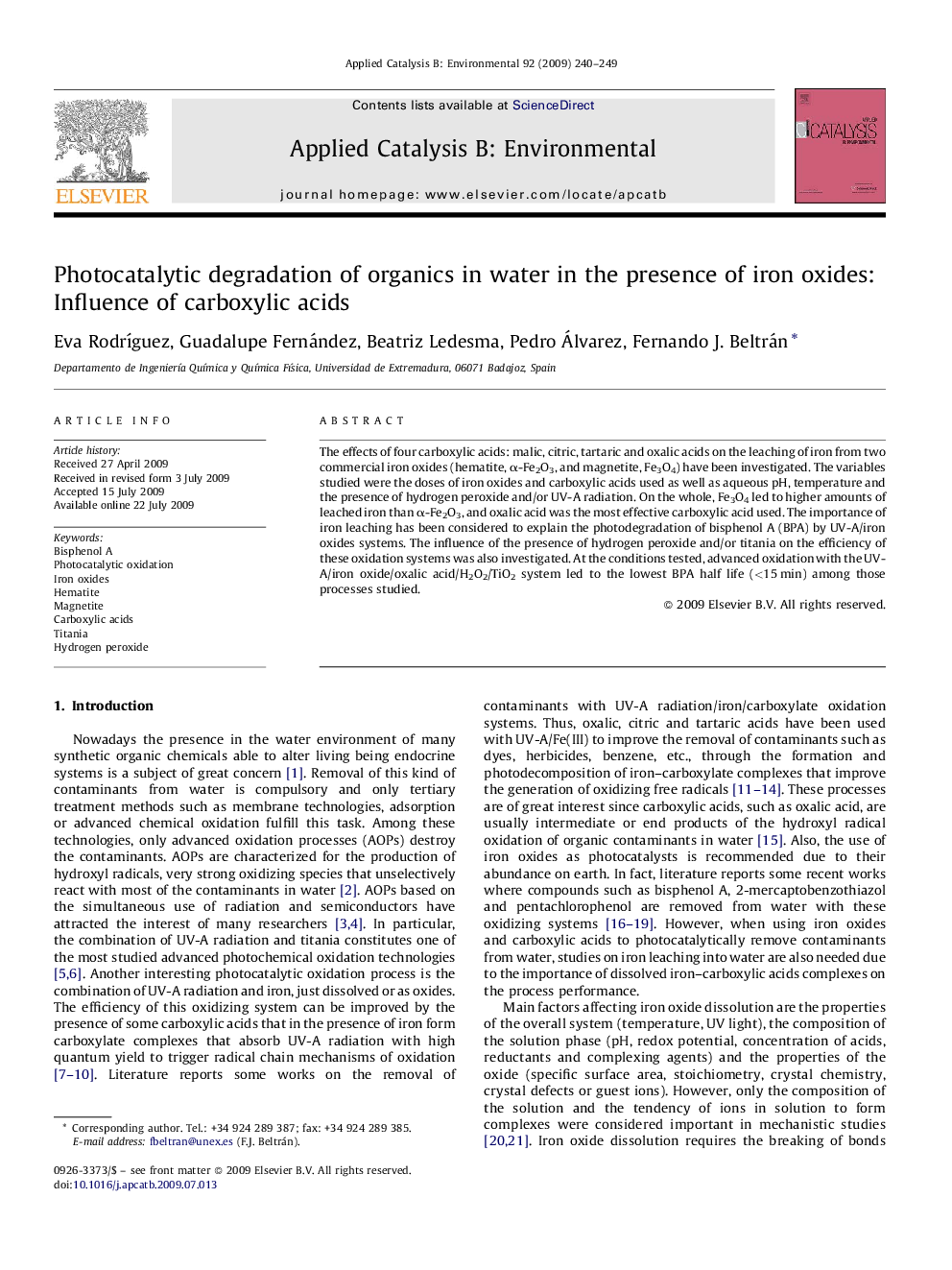| Article ID | Journal | Published Year | Pages | File Type |
|---|---|---|---|---|
| 47559 | Applied Catalysis B: Environmental | 2009 | 10 Pages |
The effects of four carboxylic acids: malic, citric, tartaric and oxalic acids on the leaching of iron from two commercial iron oxides (hematite, α-Fe2O3, and magnetite, Fe3O4) have been investigated. The variables studied were the doses of iron oxides and carboxylic acids used as well as aqueous pH, temperature and the presence of hydrogen peroxide and/or UV-A radiation. On the whole, Fe3O4 led to higher amounts of leached iron than α-Fe2O3, and oxalic acid was the most effective carboxylic acid used. The importance of iron leaching has been considered to explain the photodegradation of bisphenol A (BPA) by UV-A/iron oxides systems. The influence of the presence of hydrogen peroxide and/or titania on the efficiency of these oxidation systems was also investigated. At the conditions tested, advanced oxidation with the UV-A/iron oxide/oxalic acid/H2O2/TiO2 system led to the lowest BPA half life (<15 min) among those processes studied.
